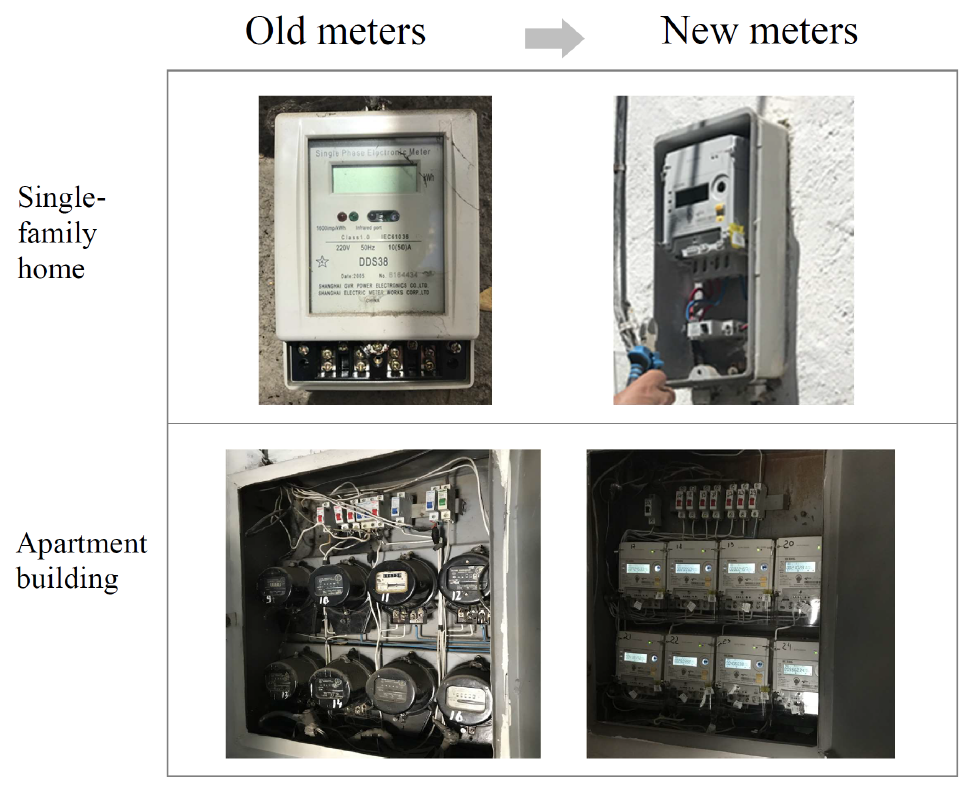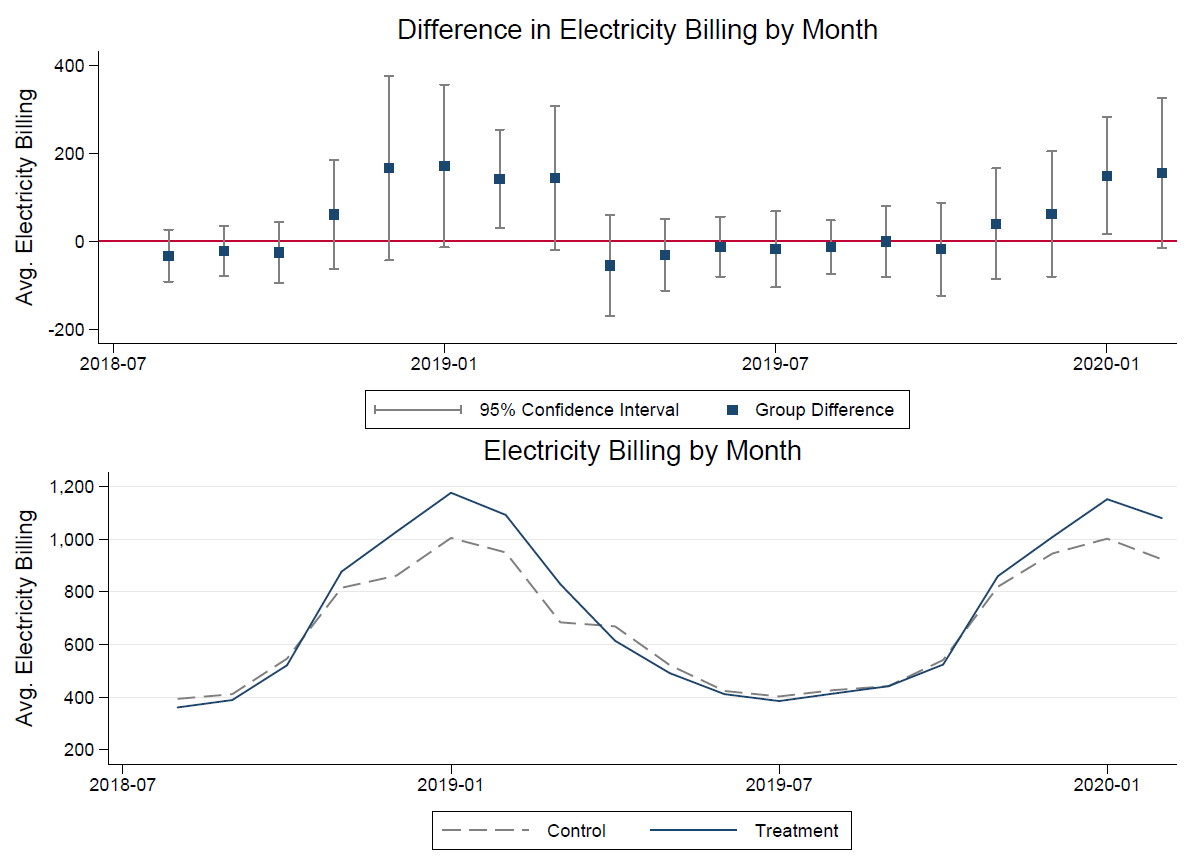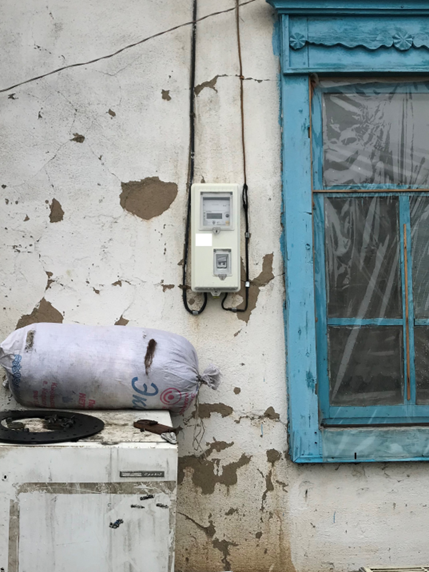
Improving the quality of electricity services can increase electricity consumption through increased appliance ownership, but investments in energy efficiency may mitigate those effects
Electricity access has increased worldwide during the 21st century, with evidence on its impacts building (see e.g. Dinkelman 2019, Lee et al. 2019). Poor electricity service quality remains a persistent problem in many developing countries (Zhang 2018, Burgess et al. 2020, Carranza and Meeks 2021), yet little evidence exists as to how residential consumers’ respond to changes in electricity quality. Understanding their response is important because hundreds of millions of households depend on grid connections that provide low-quality and unreliable electricity services (Day 2020) and variable service quality affects the extent to which households benefit from electrification (Chakravorty et al. 2014, Samad and Zhang 2016). Additionally, with 71% of electricity in low and middle-income countries generated from burning oil, gas, and coal (IEA/OECD 2018), there are important environmental implications if improvements in electricity quality (i.e. fewer voltage fluctuations and more hours per day of full service provision) result in greater residential consumption of electricity services.
The experiment: Improving electricity quality in the Kyrgyz Republic
Our forthcoming paper (Meeks, Omuraliev, Isaev, and Wang 2023) reports results from the first randomised experiment designed to provide exogenous variation in electricity service quality. Our experiment does so through randomised improvements in the quality of the grid in the Kyrgyz Republic, a lower-middle-income country in Central Asia with electricity quality issues common to many developing countries, such as daily voltage fluctuations and frequent outages. We investigate the impacts of customers experiencing and learning about improvements in service quality on residential billed electricity consumption. Billed electricity consumption could increase for multiple reasons, both due to mechanical changes (i.e. customers can run their existing appliances more due to better service quality) as well as consumer investments (i.e. they invest in and use new appliances). To understand the mechanisms through which these effects occur, we estimate the impacts on household appliance ownership and energy efficiency investments.
Smart meters: The gateway to reliable power
As they are transitioning to “smart grids,” electricity utilities in many countries are increasingly installing smart meters. These investments can potentially address a number of sector challenges, including facilitating improvements in reliability (i.e. reduce frequency of outages) and power quality (i.e. eliminate fluctuations above or below a standardised voltage range). To do so, smart meters provide high-frequency energy readings and alarms that help the utility identify and locate outages, as well as monitor for voltage fluctuations (U.S. Department of Energy 2016). Additionally, these meters cut consumers’ grid connections when voltage drops below or spikes above the safe engineering range, protecting appliances from damage and destruction.
Figure 1: Photo examples of old meters and newly-installed smart meters

Notes: Photos show examples of the old meters (left) and the smart meters (right) that replaced them. Meters installed for single-family homes are attached to the house outside (top row). The meters for homes in apartment buildings are installed in a shared stairway within the building (bottom row).
Methodology and experiment design
Estimating the relationship between electricity service quality and household outcomes is typically challenging. First, utilities may target planned outages (i.e. load shedding) to neighbourhoods with low rates of bill payment. Conversely, neighbourhoods with powerful residents (e.g. those powerful for political, financial, or other reasons) or entities providing important services (e.g. hospitals) may be spared such outages. We overcome these challenges through our study’s novel experiment and data collection processes.
In collaboration with an electricity utility, 20 neighbourhoods were selected within one city. Each neighbourhood receives electricity services via a transformer, the component in the distribution system that converts high-voltage electricity to usable, low-voltage electricity for household use. These 20 transformers, and the approximately 1,600 households that they serve, were randomly assigned to treatment or control status. At the end of summer 2018, smart meters were installed at all 798 houses in the treatment group. These replaced the houses’ old meters, which did not provide two-way communication with the utility, send alerts of poor service quality events, or automatically shut down household connections when voltage fluctuates. The control houses, 846 in total, retained their old meters. The installation of the smart meters at the specified houses was the treatment. Electricity prices remained the same across both groups during the study period.
Results: How better quality electricity impacts consumption
Our first finding is that electricity service quality improved following the grid upgrades: the intervention led to fewer incidences of voltage fluctuations per day. Next, we estimate the consumer responses to these service quality improvements and find that treated households’ monthly billed electricity consumption significantly increased, by 50.6 kWh per month during peak demand months (November to March), when many households use electric heaters. In comparison to the baseline control group mean of 806.2 kWh per month, this increase is technically and statistically significant. Billed electricity consumption did not significantly change during off-peak months (April to October). Before the intervention electricity quality issues occurred most frequently during months of peak demand, so these months have the room for the greatest quality improvements. Moreover, billed electricity consumption increased almost 5 times more among renters than homeowners, indicative of differential responses to the service quality improvements.
Figure 2: Billed electricity consumption (kWh/month) after smart meter installation

Notes: Billing data are provided by the electricity utility. The analysis here is a basic comparison, and no other control variables are included. The standard errors are clustered at the transformer level.
We investigated the channels through which service quality affects billed electricity consumption, as well as differential responses by home ownership status. We find that some of the increase in peak months resulted from investments in new appliances (i.e. more appliances purchased and used). Treated households’ ownership of electric heaters significantly increased after the electricity quality improvement and, consistent with the billed electricity consumption results, that increase in electric heaters was 2.4 times greater among home renters than it was among homeowners. Further, treated households were also more likely than control households to have made an energy efficiency improvement – window replacements, which can increase a building’s retention of heat in the winter. This home weatherisation, in conjunction with the common residential use of electric heating, implies that the increase in peak season billed electricity consumption would have been even larger in the absence of increased energy efficiency.
Figure 3: Example showing Smart meters installed on outside of house

Notes: Photo provides an example of a smart meter installed for a single-family home, attached to the outside of the house. Photo also shows the plastic film commonly affixed outside windows to reduce heat loss in the winter.
Implications for policy
These findings have important implications for international development and energy policy. Although development organisations and national governments have long focused on electrification as a key ingredient to promote development, academic research on the returns to electrification remains mixed. Our findings lend credence to the claim that in order to maximise the benefits from electrification, attention must be paid to the quality of electricity services, not merely access to electrical connections. Further, outages are not the only important quality measure; voltage fluctuations also serious impede on the full benefits of electricity access.
Additionally, the heterogeneous effects across households by ownership types is surprisingly consistent with documented gaps between renters and homeowners in developed countries such as the United States. We find that renters’ ownership of electric heating devices in the treated group increased significantly more than the homeowners, which explains the greater increase in winter billed electricity consumption among this same group. To the extent that heterogeneity in responses is driven by differences in those who pay the marginal cost of additional units of electricity consumed (i.e. homeowners) versus those that do not (i.e. renters), these results also provide potentially useful information as to how consumers facing different electricity tariffs (e.g. increasing block price versus a fixed monthly price) may respond to improved electricity quality.
References
Burgess, R, M Greenstone, N Ryan, and A Sudarshan (2020), “The Consequences of Treating Electricity as a Right,” Journal of Economic Perspectives, 34(1): 145–169.
Carranza, E and R Meeks (2021) “Energy Efficiency and Electricity Reliability,” The Review of Economics and Statistics, 103(3): 461–475.
Chakravorty, U, M Pelli, and B U Marchand (2014), “Does the quality of electricity matter? Evidence from rural India,” Journal of Economic Behavior & Organization, 107: 228–247.
Day, E (2020), “Moving beyond Energy Access – the Challenge and Impact of Unreliable Electricity in Emerging Economies,” Technical Report, Energy and Economic Growth Energy Insight.
Dinkelman, T (2019), “How does access to electricity affect people’s lives?,” VoxDev.org.
IEA/OECD (2018), “Electric power transmission and distribution losses (% of output) dataset”.
Lee, K, E Miguel, and C Wolfram (2019), “The limits of rural electrification,” VoxDev.org.
Meeks, R, A Omuraliev, R Isaev, and Z Wang (2023), “Impacts of Electricity Quality Improvements: Experimental Evidence on Infrastructure Investments,” Journal of Environmental Economics and Management https://doi.org/10.1016/j.jeem.2023.10283.
Samad, H and F Zhang (2016), “Benefits of Electrification and the Role of Reliability: Evidence from India,” World Bank Policy Research Working Papers.
U.S. Department of Energy (2016), “Advanced Metering Infrastructure and Customer Systems: Results from the Smart Grid Investment Grant Program,” Technical Report.
Zhang, F (2018), “In the Dark: How Much Do Power Sector Distortions Cost South Asia?,” Technical Report, The World Bank.




